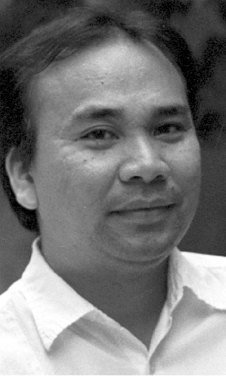
Jobers Reynes Bersales
Mixed-use commercial building, creative hub, food center, maritime museum, and night market. These are the five possible options presented by pairs of architecture students last Friday at the School of Architecture and Fine Arts (SAFAD) Theater of the University of San Carlos on the possible adaptive reuse of the Yap Anton Warehouse. They had just less than 48 hours after visiting the 3,100-sqaure-meter American colonial period edifice, now owned by the heirs of another Chinese merchant of the same period, Ong King King.
Located behind the main campus of the Cebu Technological University along Sergio Osmeña Jr. Boulevard, this building was constructed by one of Cebu’s richest Chinese merchants in 1929. It has thankfully retained its grandeur through the years, thanks in part to the great concern for history of it present owner, Frederick Ong, Jr.
Already recognized by the Cebu City Cultural and Historical Affairs Commission (CHAC) as a heritage structure, I wrote four months back about an impending destruction on a section of its façade following plans to widen Osmeña Jr. Boulevard. Thankfully, CHAC came to the rescue by immediately declaring it as part of Cebu’s heritage. Now, the owners await the nod of the National Historical Commission of the Philippines (NHCP) to declare it as a national historical landmark.
To recall, the building’s original owner, Yap Anton, constructed this grand edifice dedicated to commerce and trade in 1929, exactly on the year the Great Depression, when the American stock market collapsed and wreaked economic havoc throughout the world. This must have affected somewhat its commercial viability, the Philippines being an American colony then. After passing through various hands, the Ong Kin King family finally bought it in 1984. It is by a stroke of luck that it is this family that is keenly interested in and conversant of Cebu’s history.
This week, the two boys of Frederick Jr., one of whom is a good friend of mine, came over to the building to talk to the SAFAD students and Dr. Andras Kertesz, a foremost heritage architect from the University of Pecs in Hungary, who came in just for the week on invitation by Bro. Bela Lanyi, SVD, also a Hungarian architect who is based at USC. As part of a European Union-funded project, Dr. Kertesz was on hand to coach the students on his work and those of others in the adaptive reuse of historic edifices not just in Hungary but also in Germany, Italy and Switzerland.
While the designs the students conceived under the guidance of Dr. Kertesz and Bro. Bela are not binding on the family, discussions early on at the building itself last Wednesday already ferreted out the latter’s interest in possibly providing a section of the huge edifice into some kind of a museum dedicated to Yap Anton.
A corollary issue that emerged during the presentation was on the role of the community surrounding this structure. And it is quite noble that majority of the design concepts actually considered, for example, the informal settlers along Rafael Palma and Juan Arellano streets, many of whose houses are now made of concrete. Possible spill-over benefits were discussed in regard to, for example the maritime museum, the creative hub and the night market.
The next step is now to make these presentations to the Ong patriarch himself and see what they will decide from then on.
This development is a far cry from two other heritage structures under threat, the Patria de Cebu and the Cebu Capitol. One wishes that their owners or, in the case of the capitol, the reigning governor, will heed the clamor to respect their roles in our past.
I personally wish that there will be more among the owners of the dwindling number of heritage structures dotting Cebu who will have the same concern and deep interest in history as the Ong Kin Kings. If he were only alive today, I am sure that, as the grand commercial edifice he built turns 90 this year, Yap Anton would be the first to beam with pride at how the present owners have endeavored to save his most important legacy.